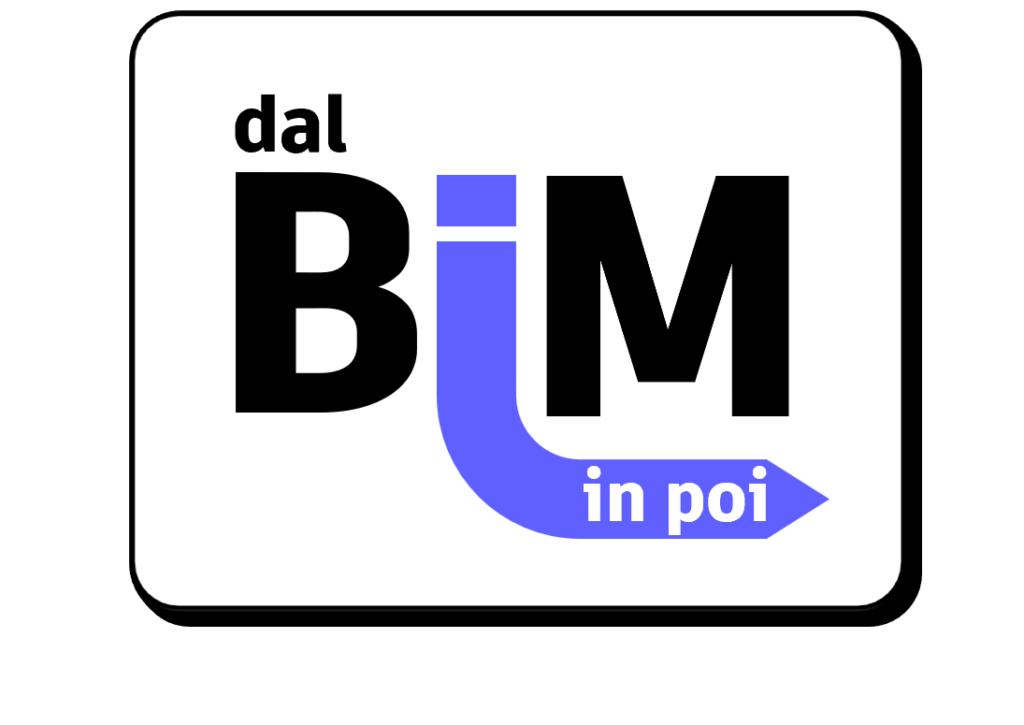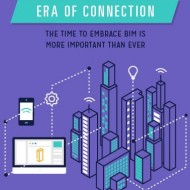“In the early twenty-first century the train of progress is again pulling out of the station – and this will probably be the last train ever to leave the station called Homo Sapiens. Those who miss this train will never get a second chance“
(Yuval Noah Harari – Homo Deus. A Brief history of Tomorrow – 2017)
[blog Autodesk “dal BIM in poi” – author: Ilaria Lagazio]
These words are taken from a recent and exciting reading of mine, which although I have personally “filtered” from some apocalyptic tones has granted me several points for reflection, linked in particular to BIM and in general to the technological revolution in progress.
Maybe despite the Author’s intentions, it gave me the opportunity to feel extremely lucky to live one of the most exciting revolutions in the history of humanity.
Certainly by now we have confirmation that in spite of the many BIM-centric discussions, BIM is a theme already obsolete – not outdated, but so obvious that real “experts” on the subject are already talking about something else.
It is funny that the picture we at Autodesk ironically call “the BIM wheel ” represented below and in its many variants is still copied and pasted into countless articles, theses and treatises…
The era of “BIM Visionaries” has been over for a while: I met some and have been part of them at the beginning of the millennium. At that time scenarios were very different: we could have lived – and maybe better – without digitization, without 3D modeling, without BIM.
We chose to challenge the status quo because BIM was BETTER, not because we had no choice. On the opposite, those who begin this journey today are already cornered.
Whoever arrives at BIM today does so with a certain frustration: he has resisted with all his strengths what he considers an imposition (due to competitive crisis, reduced margins, mandates, clients requests …) and not an advantage – and would like to recover quickly.
Unfortunately, digital transformation and haste do not get along: just as software is the most irrelevant piece in the transformation from CAD to BIM (investments in resources and in process adaptation are much more important) in the same way BIM is only a tiny piece of a global technological disruptive scenario that requires a much wider and complex analysis.
This is the reason why I prefer not to talk about tools or even BIM, but about digital and technological transformation.
The wave of digitization (and automation) is unstoppable: it’s the result of global changes triggered from long time and at this point unavoidable – and starting the discussion from BIM or any specific software is extremely limiting.
This unstoppability, however, is not bad news at all: as it is not a flood that is about to overwhelm us, but a viable way out for our survival as categories (speaking of engineering, architecture and construction) and as society.
What does all this have to do with choosing a software?
It has a lot, because the basis of very specific choices related to technological evolution software necessarily evolve to accommodate the nascent processes.
[Collaborative evolution: desktop / server / cloud]
Let me add that it is important in the choice of an instrument to be careful not to privilege a tool providing a button or solution that “solves today’s problem” without looking at tomorrow, but to reason in long term, evaluating which suggestions your supplier, retailer or trusted consultant is able to demonstrate for your long-term productivity or survival challenges.
In Autodesk, enabling technologies enhancing the effectiveness of an investment are highly considered for future software development.
[Technology trends and software development -Artificial Intelligence, Extended Reality; Data Veracity; Frictionless Business; Internet of Things]
In fact we invest more and more in digital transformation to focus on the real needs of the customer in terms of long-term competition.
In my everyday activity as a “trusted advisor”, I insist on guiding customers towards the choice of instruments, not on the basis of specific tools, but on a long-term vision of the overall reliability of the solution. In the same way I emphasize that the discussion should not be made on the need to today, but on how a customer wants to position his company in five or ten years.
For this reason the decision must not be made within the IT or Technical Department, but since it is a “business decision” – and not the trivial purchase of a license – it should be discussed at a strategic and management level.
Just as BIM is a subject that should by now be digested – and if anyone in the industry still has doubts, they should seriously worry about their professional survival – there are other technological imperatives that already today should be consolidated as enabling technologies, such as cloud, convergence between the different disciplines and automation.
Many products that I have dealt with extensively in the past (such as Insight 360, BIM360 etc.) and recent technological experiments (such as Refinery, which I recommend to deepen through this excellent Webinar held by Dieter Vermeulen, a true guru of automation) immerse the their roots directly in the infinite power of the cloud and in the search for optimization.
[Energy optimization – Insight 360]
In my opinion this is the point where we “experts” must make things clear, because it is little but sure that we are doing something wrong.
In the past I have talked about some experiences in schools, with children and teenagers from 5 to 15 years old, where I tried to convey a key to understanding the future they will face.
Well, it is surprising how much the fear of children follows that of professionals.
Even the most open and prepared customers wonder how we will manage the surplus of unskilled labor and in the worst scenario they are afraid that the automation “will make our job”. Children on the other hand, have children’s fears but are very similar, relating to “robots with human features”.
[Autodesk – Tokyo]
While being fed with everyday technology – everyone, from the oldest to the youngest, seem to be tremendously scared!
How is this possible? How could we allow it? Is it science fiction responsibility, or is there something more?
This generalized fear opens up a theme that is already recurrent and commonly referred to as “man-machine collaboration”.
A compelling argument that as technology producers does not leave us indifferent and as the name itself introduces, must be aimed at defining the fields of application of automation in support of human activity, without taking away space from the peculiarities that make man unique and unrepeatable.
As far as the general concern is about algorithms that “could fully replace us”, including aspects linked to feelings – a common thesis presented by a quantity of sociologists and futurologists – in my humble opinion is a very weak theory, for a couple of reasons.
We all agree that such a refined evolution of the algorithms is not something that can happen overnight – not tomorrow, nor in a few decades, nor even in a century: as far as we invest in knowledge of the “algorithm-man” it seems that we are not even yet come to define a relationship between biological algorithms and what we consider “mind”.
It would be therefore a paradox today to prevent us from using an intelligent solution for compelling problems – where the contribution of automated processes can give great value to the humanistic and ethical contribution – for the fear how the world could evolve in 200 years!
The second reason is that History has taught that long-term forecast concerning the society development and long-term human relations has often proved unfounded. If we only think about science fiction of the 1960’s the most recurrent images were not “future”, but “projection of the present in the future” – robot handled vacuum cleaners to help women and space cars driving men to work – a scenario completely different from how society has evolved.
It therefore seems obvious that when we think about a “reasonable” long-term idea, we have to keep in mind that there is no other sustainable way to operate unless we use automation – unless we decide that the 400,000 people who get rid of their poverty status every day by becoming formally “middle class” should be prevented to do it.
The productive push and the opportunity consequence of this population in economic growth is enormous. This demographic increase means urbanization: a huge challenge if compared to our current capacity to build houses and infrastructures, which we will not be able to deal with, with the resources we have today.
[Hong Kong]
While the urgency to face sustainable solutions becomes more and more compelling, we struggle wondering about the opportunity of relying on automation to face this challenge.
But what does “automation” actually mean?
Automation to me is a journey, starting from digitization and ending up generating the best possible solution in the most sustainable way.
It is natural to think that if on one hand I have all the data that make up my digital model, the context and the surrounding conditions, and on the other hand have the possibility of tapping into unlimited computing power, I have the ability to create algorithms that allow me to reason about the model by shifting the focus from the geometric model to the behavioral model, and finally obtaining the best conformation with the least productive effort.
In practice, I get more value with less resources: exactly what the planet needs.
It is assumed that all this cannot be triggered without the digital model, without the BIM, without the Common Data Environment – without the DATA.
The optimization is not limited to the model, but extends to the production method and construction, generating the most intelligent supply chain and evolving the production method (robots, 3D printing, drones …) and management (cloud sharing processes, paperless sites, virtual reality, IoT…).
It sounds tremendously complex, but there are plenty of solutions that can be mentioned ready to use: Autodesk AEC Collection is an example.
For example, you can create a model with Revit, parameterize it with Dynamo and optimize its behavior with the Refinery beta. Or starting from FormIT/Revit you can optimize energy performance with Insight 360. (Some descriptions are reported in the links at the bottom of the article).
[Wvan Wijnen – how a Danish family company has been able to take advantage of automation to make “buildings more competitive and of superior quality in a sustainable way”]
After optimizing the model, you can optimize the production flow of the construction components: just think of the workflows Revit to AD Steel or Revit to MEP Fabrication for the generation of CNC files of steel structures or HVAC components directly generated from the BIM model.
Finally, we can still benefit of the cloud, this time not to optimize, but to share information.
Autodesk BIM360 platform allows sharing all project information in the cloud and apply customized processes to them based on the objectives to be achieved.
The real challenge is not what we can do but our will. The real limit is not automation, but our imagination.
There is no doubt that the labour market is going to change in a massive and revolutionary way: but at the same time there is no doubt that this transformation is inevitable.
We have two roads ahead of us: the first is the possibility of maximum exploitation of resources, with constant or even reduced quality. The second is differentiation through excellence, the one that we should all pursue.
As it has happened with BIM revolution, even with automation, an incomplete and unconscious implementation will not bring long-term advantages but only complexity, economy folding and social inequalities.
Automation must be embraced as a chance to do better – which is the very definition of sustainability – and it is at this precise moment that we are called to choose.
It is not true that we have no choice: indeed, we are called to make our choice, and the time is right now.
Approfondimenti (*):
(*) at the moment the following links as well as many embedded in the text are in Italian, my native language and blog. I have a plan for translation but will take some time. Sorry for the inconvenience.
https://blogs.autodesk.com/dalbiminpoi/2018/12/03/tendenze-tecnologiche-per-il-futuro/
https://blogs.autodesk.com/dalbiminpoi/2016/06/06/la-tecnologia-e-la-sostenibilit/
https://blogs.autodesk.com/dalbiminpoi/2017/01/23/modellazione-generativa/


















